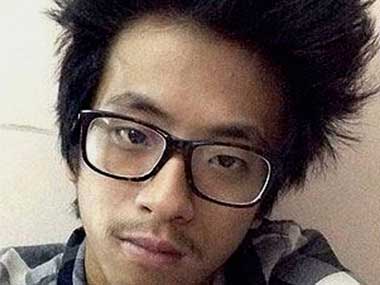Nido Taniam, who was mercilessly beaten up by locals in Delhi’s Lajpat Nagar and then died in a hospital, was just 20 years old. His untimely and shocking death has yet again turned the spotlight on a question that raises its head only rarely our country, otherwise caught up with ‘bigger’ issues. And that is the relentless racial profiling of the people from India’s north-east. Taniam was from Arunachal Pradesh. “This is the manifestation of the flawed policies that the policy makers has come up with for the 45 million Indians who live in the North East. There is still a huge policy challenge in this regard. The entire conscious of the North East is absent form the larger conscious of India,” secretary general of Control Arms Foundation of India, Binalakshmi Nepram told CNN-IBN during a panel discussion. [caption id=“attachment_1369343” align=“alignleft” width=“380”]  Nido Taniam. PTI[/caption] Admitting that there is a big gap between the North East and mainland India, sociologist Sanjay Srivastava, stressed on the urgent need to bridge the widening distance. “We do not consider the people of North East as cultural citizens of India even though they are legal citizens. Even today the history of the North East is not part of our mainstream curriculum. We need to have broader cultural context. How many Bollywood movies have people from the north east playing the lead? How many news channels have anchors from north east India? We have to incorporate people from north east India into the mainstream cultural narrative of India,” said Srivastava. Emphasizing the need to promote and include north east India right in schools so that children don’t grow up differentiating that part of the country from the rest of India, Nepram said, “Children should know about the history of Tripura, Manipur, Sikkim, Nagaland as much as they know about the Red Fort. The CBSE and NCERT syllabus should include history of north east India.” Although there are sharp reactions and massive condemnation of the incident, a section of the country still refuses to accept it as a racial one. “This was a freak incident. This was not racial as such. People often tend to look differently at us because of our looks, habits and lifestyles. There are legal provisions to stop slurs against people from North East but the mindset of the people have to change first. We have to educate our people,” Minister of State for Minority Affairs, Ninong Ering told CNN-IBN during the discussion. Concluding whether Taniam’s death was a result of a racist attack will not be easy. However, his death has increased the apprehensions that people from the north east feel while mingling with societies in other Indian states. “Many of our people don’t know Hindi and they fail to communicate with others even if they want to. Since we look different people almost treat us like we are from a different planet. We have a constant fear in our minds,” said a student leader from Arunachal Pradesh, Taba Doni. Nepram also agreed that there is a fear quotient at play. “There is a pattern to these crimes. We are worried who will be the next victim. The North East is also a conflict zone. There are 72 armed groups in action in the region. The young boys and girls from North East come out to have a secured life but they killed instead,” she said. It is clear that there is neither a short cut nor a quick solution to this problem. It needs a very studied and careful approach as it is already a sensitive one. Perhaps sociologist Srivastava got it perfectly right when he said, “It is not primarily a policing problem but also a socio-cultural one. It is an attitude problem and not an law and order problem alone.”
Whether or not this was a racial incident, the debate will go on but it was apparent there was a certain fear factor in the minds of the people belonging to the region.
Advertisement
End of Article


)

)
)
)
)
)
)
)
)



